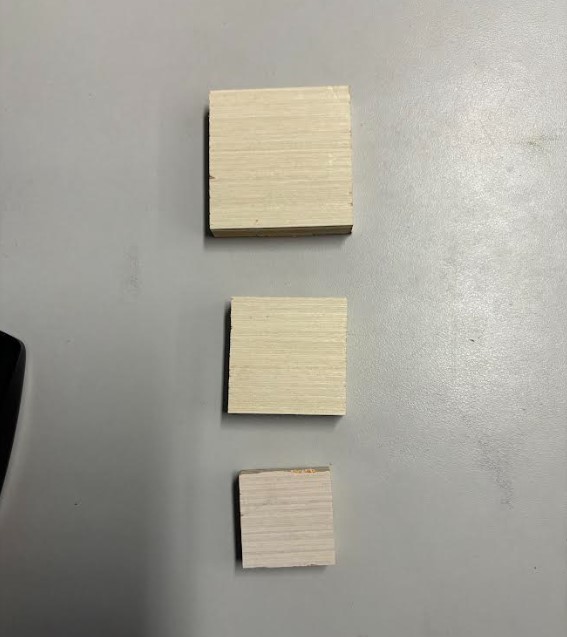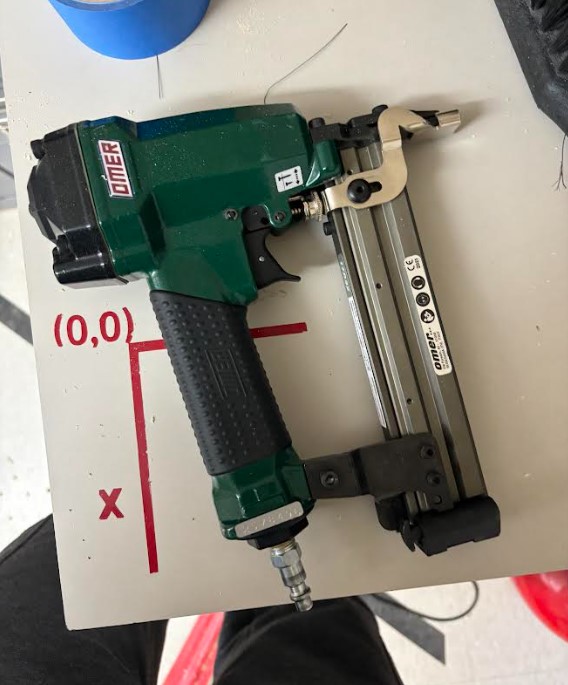7. Computer Controlled Machining - Connor, Kabir, Angelina¶
This is the group documentation site for Angelina Yang, Connor Cruz, and Kabir Nawaz.
Assignment¶
-
do your lab’s safety training
-
test runout, alignment, fixturing, speeds, feeds, materials, and toolpaths for your machine
Toolpaths: Inside, Outside and On¶
First, we evaluated and meausred the toolpaths of our lab’s ShopBot PRSalpha by performing the same profile three times, only varying whether the toolpath lied on the vector, outside the vector, or inside the vector. There was already quite a time constraint due to spring break, so we worked with the two other groups during this process.

On, outside, and inside from top to bottom
Here is how the squares turned out:

From this image, we deducted how the cut changed depending on the toolpath. We found that the inside-vector cut produced the smallest square, on-vector cut produced the medium sized square, and the outside-vector cut produced the largest. For bigger projects that are heavily contingent on precise dimensions, it’s best to use the outside setting, so we don’t remove too much material.
Alignment¶
In terms of alignment (used after performing an aircut for example), we simply run the C3 command on the ShopBot application, which rehomes the machine and resets the z-zero height to the machine bed. This enables the CNC machine to determine the depth of its cut in relation to the bed.
Fixturing¶
In terms of fixturing, the process in which a material is fastened to a bed/workspace, we can use different methods such as clamps, screws, brads, etc. While making our furniture, we decided to use a pneumatic brad gun, which uses compressed air and a tube to insert plastic nails into the material and the bed. Typically, we spread these brads out around the corners, sides, and the center of the material, preferably where it won’t be destroyed.

Material¶
In our lab, we used either .5” or .75” plywood, depending on the type furniture we were making. For instance, we were advised to use .75” for more sturdy pieces of furniture, such as stools. Other materials include acrylic, copper, alumiminum, steel, etc.
Additionally, for profiles, to prevent damaging the bed of the CNC machine, we typically use a sacrificial layer beneath the material.
Runout¶
Runout is defined as the extent of a rotational error that causes holes to be off-center or not exactly round. When we use different bits to drill, the amount of material taken out will always be slightly bigger than intended.
To determine the runout on our ShopBot, we used a dial test indicator, which is situated around the bit and gives off a reading when the spindle is manually spun.
Indicated by the tick mark, the bit’s runout is around ~.0001” (one ten thousandths of an inch), meaning that it isn’t completely circular or even. Although it will slightly affect the dimensions of the design, it won’t have a huge impact.